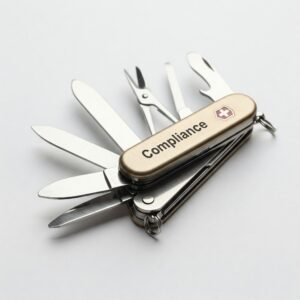If you’ve ever wondered, “What is AML monitoring?” or how it fits into Enhanced Due Diligence (EDD) processes, this guide is for you. Anti-Money Laundering (AML) monitoring is a cornerstone of financial compliance, helping institutions prevent and detect suspicious activities that could indicate money laundering, terrorist financing, or other financial crimes.
In this post, we’ll break down AML monitoring, its processes, and its crucial connection to EDD. Let’s dive in!
What Is AML Monitoring?
At its core, AML monitoring refers to the processes and systems that financial institutions use to identify and report suspicious transactions. This involves:
- Tracking financial transactions: Using automated and manual systems to keep an eye on the flow of money.
- Identifying unusual patterns: Highlighting activities that deviate from the norm.
- Flagging potential risks: Escalating concerns for further investigation when certain criteria are met.
How Is AML Monitoring Done?
AML monitoring relies on a mix of technology and human oversight. Here are the key components:
1. AML Monitoring Systems
Modern AML monitoring systems are software solutions designed to process vast amounts of transactional data in real time. These systems:
- Analyze transactions against predefined rules and thresholds.
- Alert compliance teams to potentially suspicious activities.
- Generate reports for regulatory authorities.
2. Ongoing Monitoring AML
A critical aspect of AML efforts is ongoing monitoring. Rather than a one-time check, financial institutions continuously assess customer activities to identify emerging risks. This includes:
- Regularly updating customer profiles.
- Monitoring high-risk accounts with enhanced scrutiny.
- Ensuring compliance with regulatory updates.
3. AML Transaction Monitoring
This process involves scrutinizing individual transactions and patterns to identify anomalies. For example:
- Large cash deposits or withdrawals.
- Transactions involving high-risk countries.
- Multiple small transactions designed to avoid reporting thresholds (a tactic known as “structuring”).
4. AML Monitoring Scenarios
To improve detection accuracy, AML monitoring systems use predefined scenarios or rules. Common scenarios include:
- High-risk jurisdictions: Transactions involving countries with weak AML regulations.
- Unusual transaction volumes: Sudden spikes in account activity.
- Related accounts: Transfers between accounts that appear to be linked without a clear purpose.
How AML Monitoring Relates to Enhanced Due Diligence
Enhanced Due Diligence (EDD) involves a deeper level of scrutiny for high-risk customers. While standard due diligence may suffice for low-risk clients, EDD requires:
- Comprehensive data collection: Gathering additional documentation and verifying customer identities.
- In-depth risk assessments: Evaluating factors like geography, industry, and transaction patterns.
- Integration with AML monitoring: EDD findings help fine-tune AML monitoring systems by adding context to customer risk profiles.
By linking EDD processes with AML monitoring, financial institutions can:
- Detect risks more effectively.
- Ensure compliance with global regulations.
- Protect themselves from financial crime exposure.
The Importance of Proactive AML Monitoring
Effective AML monitoring isn’t just about meeting regulatory requirements—it’s also a safeguard against reputational damage and financial losses. By leveraging robust AML monitoring systems and integrating them with EDD practices, institutions can:
- Stay ahead of evolving threats.
- Build trust with customers and regulators.
- Streamline compliance processes.
Final Thoughts
AML monitoring is a vital component of any financial institution’s compliance strategy. From identifying suspicious transactions to enhancing due diligence efforts, it plays a key role in safeguarding the global financial system.
As regulations grow more complex, investing in sophisticated AML monitoring systems and aligning them with EDD practices will be critical for staying compliant and resilient. With a proactive approach to AML monitoring, institutions can not only protect themselves but also contribute to a safer financial ecosystem.







